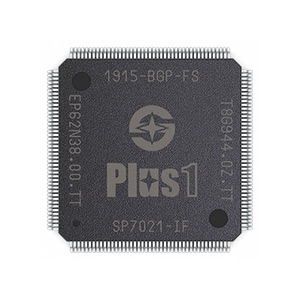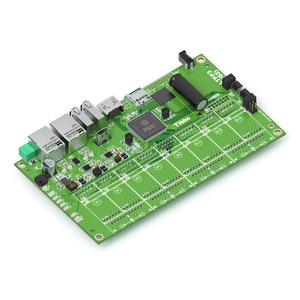Easy-to-Use LQFP Package
The Plus1 is available in an easy-to-use 20x20mm LQFP176-EP package. Unlike BGAs, TQFP ICs are easily handled by humans; for example, they can be hand-soldered during the assembly of board samples. TQFP packaging also simplifies the PCB layout work and facilitates the use of lower-cost, four-layer or two-layer PCBs. This alone leads to substantial cost savings compared to six and even eight-layer boards often needed to accommodate BGA-packaged CPUs! In their simplicity, your boards will look more like a typical "microcontroller" rather than "typical Linux CPU" designs.
See the difference...



















